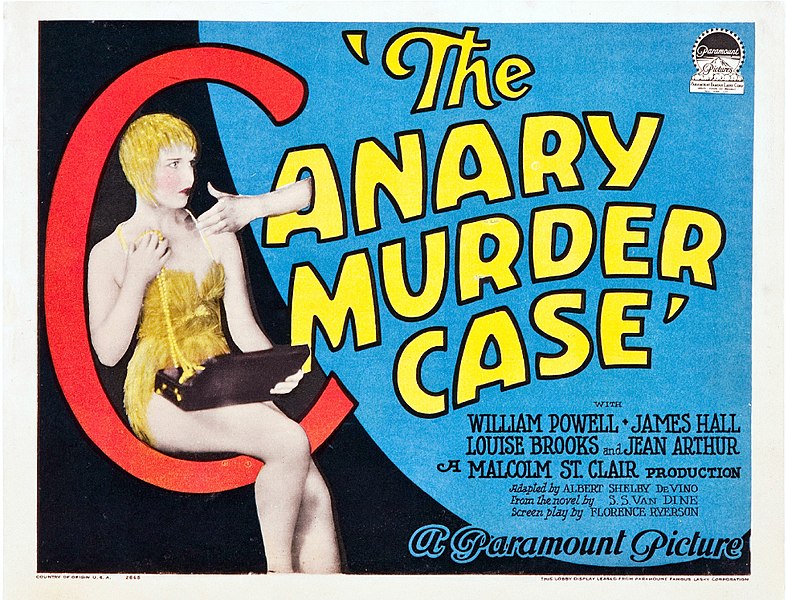
LOUISE BROOKS ~ THE CANARY;
Louise Brooks is one of the most iconic figures of the silent screen due almost entirely to the three films she made in Europe towards the end of the silent era which are rightly considered classics. So wedded is she to the Roaring (but silent) Twenties that it is often forgotten by all but her most devoted fans that she did indeed make some talkies. Of course it's also true that most of her talking roles were entirely forgettable. There were a few supporting roles in typical screwball comedies and a few more low budget quickie westerns. Amidst these run-of-the-mill genre flicks there is one talking film that is of interest albeit more due to the film's convoluted back stories.
"The Canary Murder Case" was a mystery film that actually began as a silent as part of a planned series based on the Philo Vance mystery novels written by SS Van Dine and to be played by the dapper William Powell. Louise Brooks was to play a femme fatale who meets a nasty end leaving Vance to solve her murder. The film had a decent budget and sported a flashy sequence with Louise as a chorus girl on a swing that was sure to be an attention getter. However by the time filming ended the studio had a problem named Al Jolson. In 1928 Jolson's partly talking film "The Jazz Singer" came out and instantly made silent films look obsolete. An untold score of films in production were quietly shelved until someone could figure out what to do with them, including "the Canary Murder Case". The same was basically true with their stars as the studios worried about the ability of even their big names to make the transition to sound. In many cases they were not unjustified but being the ruthless businessmen they were the studio owners they took the opportunity to rid themselves of troublesome or less bankable stars either by cancelling or not renewing their contracts or by forcing them to do voice auditions and cutting their pay. Infamously, big names like Clara Bow, Colleen Moore, Corrine Griffith, John Gilbert and various Europeans found themselves victims of the new era. Although not really a big star Louise was probably safe from getting actually cut but she was expected to come in for the dreaded voice audition. Meanwhile the mercurial Louise, unhappy with the roles she had been given, previously largely comedies aside from "Beggars Of Life", considered her best American film, and feeling disrespected by the studio, indignantly refused and stomped out of a meeting to impulsively accept an offer by the acclaimed German director GW Pabst to come to Europe where he had the perfect role for her. The resulting films "Pandora's Box", "Diary Of A Lost Girl" and a following French film "Beauty Prix", are so well known and have been written about so thoroughly that there is no need to reexamine them here. Suffice it to say the films and Louise were a dazzling hit and are among the last true classics of the silent era. However after two years of European stardom the always footloose Louise was homesick. Pabst begged her to stay but she wanted to return home and since she never learned any other languages she was not entirely wrong about her long term prospects in Europe and returning to Hollywood in triumph was probably the sensible move. Or it would have been if she had been anybody other than Louise Brooks.

When Brooks showed up in Hollywood the Paramount Studios she stormed out of did not exactly welcome her with open arms, however they were not quite ready to give up on her either. While not really huge hits her European films were successful enough and critically acclaimed and Louise was too charismatic to ignore. And besides there was a Louise Brooks film still sitting in the vaults that was an adaptation of a book series that had already shown some success and which had already been mostly finished at considerable expense thus they were loath to write it off completely. By 1929 the studios had figured out that they could salvage some of their as yet unreleased films by some clever edits of reshot scenes and over-dubbing others. These are the techniques that Alfred Hitchcock would also use to redo "Blackmail", originally filmed as a silent film, as his first talkie in 1930.
Accordingly when Louise arrived she was given a chance to resume her contract starting with recording voice-over tracks for her already filmed parts. However this would require having to do the hated voice audition she had previously skipped out on and the ever temperamental Louise refused to consider it. She would claim to be insulted in having to audition ("I have a perfectly lovely voice" she later said) however she also later admitted that she had gained a new wealthy boyfriend in New York and frankly couldn't be bothered. This left the by now thoroughly annoyed studio having to go to plan B, getting a ringer. Hitchcock found himself in the same position as his "Blackmail" leading lady, Swedish actress Andy Oonda, had a fragile grasp on the English language and her voice needed to be overdubbed. Accordingly director Martin St Clair signed up Margaret Livingston for the overdubs of Lousie and set to work drastically rewriting and reshooting other scenes.

"THE CANARY MURDER CASE" (1929);
Directed by
CAST;
WILLIAM POWELL ~ PHILO VANCE
LOUISE BROOKS ~ MARGARET O'DELL (voice by Margaret Livingston)
JEAN ARTHUR ~ ALICE LA FOSSE
JAMES HALL ~ JIMMY SPOTSWOODIE
CHARLES LANE ~ CHARLES SPOTSWOODIE
GUSTAV VON SEYFFERTITZ ~ AMBROSE LINQUIST
EUGENE PALLETTE ~ SGT HEATH
OSCAR SMITH ~ BELLHOP
~~~~~~~~~~~~~~~~~~~~~~~~~~~~~~~~~~~~~~~~~~~~~~~~~~~~~~~~~~~~~
The plot is a fairly routine pre-code potboiler in which Brooks plays a glamorous showgirl nicknamed the Canary who is a star of a broadway revue the showpiece of which features her on a swing flying out over the audience. It quickly turns out that the Canary has a sideline as a high priced courtesan with a string of wealthy older male clients and worse another sideline as a blackmailer and as might be expected this gets her murdered. This is not really a spoiler as she is killed off about a third of the way into the film. Enter Philo Vance, (William Powell) a private detective who has been hired by one of her targets to pay her off and get compromising material from her and now must solve her murder. The suspects include the Canary's various clients, a couple of wealthy older men as well as a young man who is engaged to a socialite and his father who had hired Philo to negotiate with the Canary. There is also a former criminal associate of hers who is shaking her down for money. Thus far the film has been a decent enough genre film with that one memorable scene of Miss Brooks on the swing. As the Canary Louise is as beautiful and charismatic as usual although her character doesn't actually do very much and gets killed off fairly quickly. Small wonder Louise was unimpressed with this film. She does get to wear some spectacular costumes and the scene of her gleefully swinging out high above the well dressed audience is still eye-catching and it became the film's best, if only, remembered scene. However even that's actually not well filmed using wide shots of the stage and chorus girls intercut with shots of Louise on the swing that rely on a too obvious rear screen. The latter was probably inevitable but there is no reason the stage and chorus girls could not have been shot better. In a German film they almost certainly would have been filmed with close ups and shots of shapely legs kicking in tandem. Unfortunately the rest of the film runs into the problems common with the first couple years of talkies, being very stagebound and slow moving. Philo Vance is not a two fisted private eye like Sam Spade or Bulldog Drummond who solve their cases with brawls and gunplay, instead he observes and analyzes behavior which he does mostly in two scenes where he interrogates the suspects and plays a hand of poker with them to analyze their behaviour. Eventually he solves the case with a solution that involves another relatively new form of technology which I won't reveal.
The first generation of microphones were heavy and needed to be hidden in various props like flower vases or lampshades which meant the cast was forced to cluster around reciting their dialogue as if in a radio play. The cameras were also affected as besides being forced to stay in place the cranking of the cameras themselves could be picked up by even the crude early mics forcing them to be encased in soundproof padded booths further anchoring them in place. Thus the dramatic tracking shots of FW Murnau, Fritz Lang and Abel Gance were nowhere to be seen for a few years until the technology improved. It was this film's misfortune to get made during the fairly brief time when the unhappy filmmakers weren't quite sure how to adapt to the new technology. At least this director wasn't as a year later Hitchcock's "Blackmail" showed more deftness. To be fair it's likely this film was rushed through to take advantage of Louise's newfound notoriety and to kickstart what the studio intended to be a Philo Vance series and didn't take the extra time Hitchcock would to rework "Blackmail". Accordingly it's now fairly clear what parts of the film were originally filmed as silent and which were reshot and rewritten. The early part of the film were obviously filmed first as they include Brooks who we know wasn't around for any reshoots and these are conventional enough aside from the swing scene but from after the Canary is killed the pace slows to a crawl with the extended interrogation scene and the poker game both of which require the actors to sit or stand in place hovering around obvious places for a mic to hide. These scenes were clearly reshot with sound in mind as there would have been no point in staging a silent film scene this way. One could imagine a poker scene filmed silently ("Dr Mabuse" comes to mind) but there would have been shorter shots with closeups of darting eyes and shuffling hands rather than the slow pans and wide shots here, and it would not have gone on as long. Following this are even longer scenes where Vance simply sits and explains the crime which would also not have worked as a silent. In that sense this is almost a minor classic in how filmmakers in this mercifully brief era struggled to cope with the new technology. Note that part of the crime's solution (and a spoiler alert here) requires the use of a phonograph player which also would have made little sense in a silent film. The dialogue in the scenes with Louise is rather clunky even by the standards of the early thirties no doubt partly because they did not have her for reshoots and had to use what footage they had and dub it in as best they could. However it's also likely they just didn't give much thought to these scenes.The later dialogue with Philo Vance is more detailed and less rushed and Philo's deductions are actually fairly clever. Finally this film also shows that filmmakers in the first few years of talkies were unsure how to use music and there is very little of it and what there is isn't well used. Basically there's the opening scene of the Canary on her swing flying over a musical revue but the sound is muffled and there's the brief closing credits but that's about it. Given that the film was partly set on a musical stage and the opportunities for using music are obvious this shows real lack of imagination from the filmmakers.
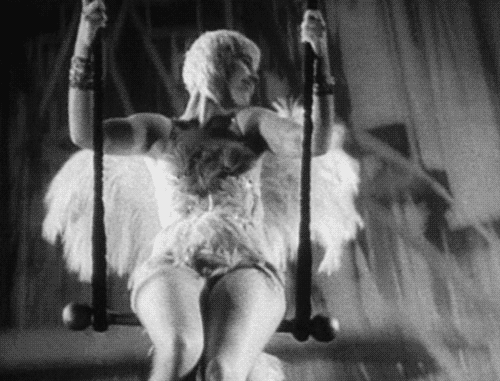
This film has always been described as being a silent film that had the sound dubbed in after the fact but it's clear from actually watching it that there had to have been extensive reshoots (probably done quickly) and even serious rewrites and this is probably a substantially different film than was originally planned. There are four different writers listed in the credits including the original novelist SS Van Dine which is unusual for a film of the era once again suggesting Van Dine wrote the original script and then extensive rewrites were needed. This would also explain the notable variations between parts of dialogue which read like cliche crime story studio hackery and vaguely racist attempts at comic relief and other more measured and detailed talk from Philo Vance. It would be interesting to see the missing footage or at least a script but it's safe to assume that it's long gone. This is an average film from a very specific and brief era at the start of sound that only lasted a couple of years but certainly not a great film and aside from the always watchable presence of Louise it would be easily forgotten. William Powell as the unflappable Philo Vance is fine and carries the bulk of the film. Less welcome is the character of the black hotel bellhop (Oscar Smith) who engages in the kind of stereotypical tropes of the wide-eyed, stammering, nervous and servile loyal black comic relief servant (to be fair the stammer was apparently genuine) although he is actually not treated as an object of ridicule in the same degree as the white detective police sergeant (Eugene Pallette) who is a bumbling oaf, full of clueless self-confidence. Smith would play similar characters for years as a stereotypical servile black comic relief side similar to actors like Steppin Fetchit, Rochester Anderson and Mantan Mooreland and while these cliche characters are demeaning to modern eyes they allowed these black actors to have long careers and they have been granted some respect as comic actors from modern critics. The real Smith was far from his bumbling characters and while he had started with a shoeshine stand he would appear in films that included "Double Indemnity" (1944) he also had a career as an agent for other black actors. He died in 1956 aged 70. Jean Arthur, who played the loyal fiance of the cheating son of Philo's wealthy client, had begun in silent films and would go on to star in a number of classic films including Screwball Comedies "Mr Deeds Goes To Town", "You Can't Take it With You", "Mr Smith Goes To Washington" and Westerns "The Plainsman" and "Shane". She is given little to do here and her character is too wan to make an impact. One of the suspects is played by Gustav Von Seyffertitz, an aristocratic German who had been acting in American films since before World War One including playing Moriarty opposite John Barrymore in the 1922 version of "Sherlock Holmes".
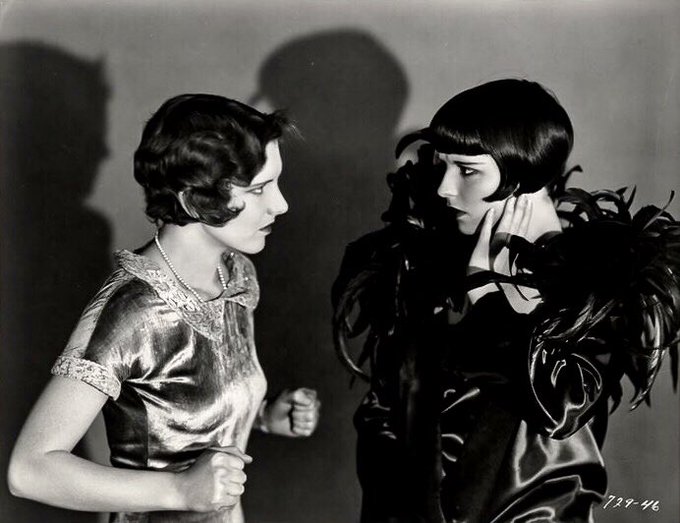
LOUISE BROOKS & JEAN ARTHUR (Note; they don't actually have any scenes together in the film, at least not in the finished version. This is true of most if not all production stills from this film further suggesting serious reshoots)
One probable reason why the studio was so stubborn about rushing this cursed film through, besides the (correct) belief that the Philo Vance character had potential to be serialized and the (incorrect) belief that Louise was a potential marketable star, was that the plot was based on two recent high profile and scandalous murder cases and they had to strike while they were still fresh in the public's memory.
=====================================================
DOT KING ~ THE BUTTERFLY;
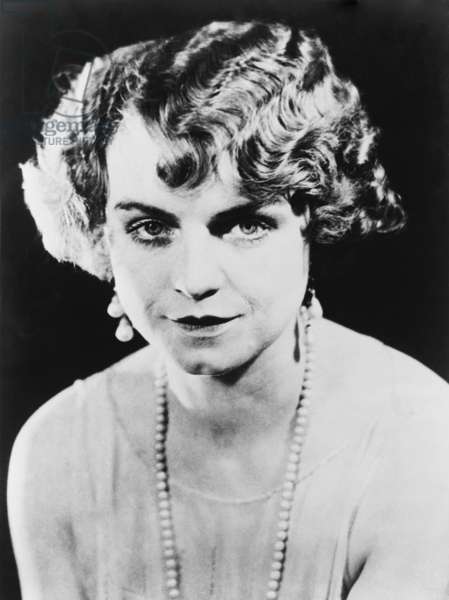
Dot King was a lovely blonde who had New York at her feet in 1923. She was a pretty, popular, bubbly 28 year old (or possibly older) former Broadway showgirl and current hostess of one the most fashionable speakeasies in wealthy Manhattan and she had no shortage of lovers and jewels. However at least one of those two things probably got her killed on the night of March 14 when she was found in the bedroom of her fashionable apartment the next morning by her maid, suffocated to death. When the police arrived they were not exactly models of efficiency, first declaring on the spot that she had died of a suicide but the no doubt annoyed coroner quickly dismissed this pointing out the way her right arm had been wrenched behind her back and telltale burn marks of chloroform around her mouth not to mention the empty chloroform bottle lying nearby. This was a murder, no doubt. The question was why? There turned out to be no shortage of motives starting with the matter of her missing jewels. Dot had a jaw dropping $30,000 worth (more than ten times that now) including necklaces, pins, tiara, earrings and an eye watering $1500) ruby necklace, and they were missing. Robbery now seemed the obvious motive but in rummaging around the apartment the police next found a pair of men's yellow silk pajamas (hurriedly stuffed under a pillow by the maid before calling the cops) and next a collection of gushing love letters letters from a fervent admirer who "longed to kiss your pretty pink toes". These missives were traced to one J Kearsley Mitchell, scion of one of the wealthiest, socially prominent families in Philadelphia who somewhat redfacedly admitted that yes those were indeed his letters and his silk pajamas and in fact he was in the habit of buying her expensive baubles and leaving thousand dollar bills under her pillow and well yes, he had been with her the evening before but then he taken her out to dinner along with his lawyer (who says romance is dead?) to a fancy restaurant then drove her to her door, gave her a peck on the cheek and went home. There were witnesses, besides his own lawyer and driver. This was quickly confirmed and Mitchell was sent back to explain things to the scandalized old money snobs at home while dodging the press who were now gathering like hungry seagulls at the pier. This had all the elements to officially become a media case; murder, sex, a beautiful victim, money, celebrity and an unsolved mystery.
It turned out that trying to sort out the mystery of her death would also require sorting out the equally shadowy mystery of her life. Dot King had arrived on the New York scene some time around the end of the Great War with a flourish, billing herself as a model and showgirl who had appeared on Broadway in the famed Ziegfeld Follies. In life she happily encouraged speculation about her career as a dancer, actress and model and the press was happy to accept her as a celebrity but was she vague about her past. In death questions began to be asked. It turned out the Ziegfeld Follies Revue, which had started in 1907 and boasted such talents as WC Fields, Eddie Cantor, Josephine Baker, Fanny Brice, Bert Williams, Eva Tanguay, Will Rogers, Sophie Tucker, Ray Bolger, Ed Wynn, Gilda Gray, Nora Bayes, Ruth Etting, Helen Morgan and ironically none other than Louise Brooks herself, had no record of her, she certainly had never starred in any production. Nor was there any record of any notable off-Broadway productions. There was no record of her appearing in any films either. Was her entire persona a lie? Maybe. Some crime historians think so but that while she clearly exaggerated her showbiz career it's also possible she did appear as a lowly, anonymous chorus girl, if not on Broadway then off the Great White Way. Perhaps way off as a dancer in the seedy world of burlesque. She did do some modelling work as well although again nothing too high end or artistic. It also turned she was at least a few years older than assumed and Dot King was not her real name, no big deal as plenty of showbiz folk changed their names, but she had also been secretly married and had not been divorced until the previous year although they had been estranged since before the beginning of the decade when she first began to make an impression.
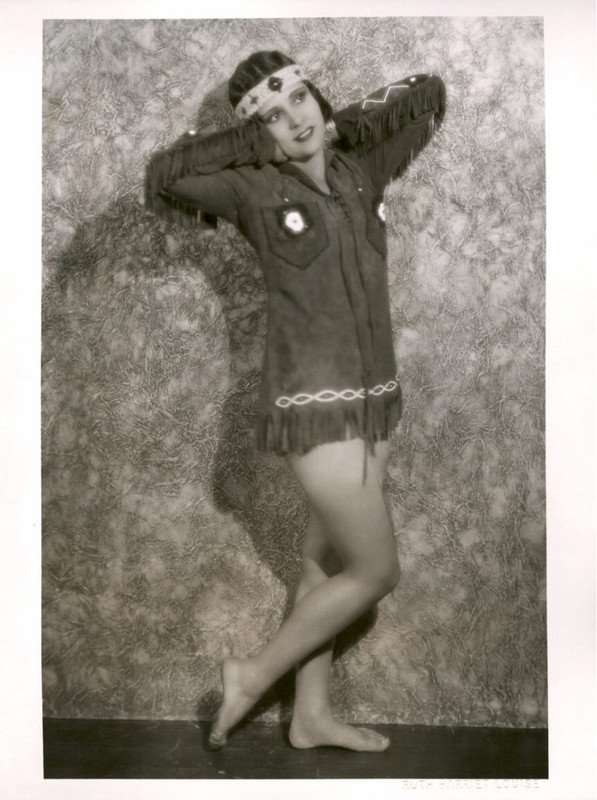
DOT KING; THE BROADWAY BUTTERFLY
Her real name was Anna Marie Keenan and she was born in August 10 1896 (although some sources suggest she may have been born in 1894) to poor working class Irish immigrants in upper Manhattan, in a similar background story to Clara Bow. By age 16 (or 18) she had already dropped out of highschool and married Eugene Oppel. It was not a happy marriage, he was an unambitious part time chauffeur who walked with a limp and had little future career prospects while she was dreaming of better things and she came to despise him, referring to him as a bum. They married in 1912 (which would have made her only 16 if the 1896 date is correct which is certainly possible but does make the 1894 date more likely) but by at least 1920 he was listed in census reports as living in Brooklyn alone and Anna Keenan was moving on up although it would be years until she got around to actually divorcing him. She got a job working in a dress shop, changed her name to the less ethnic sounding Dot King and dreamed of becoming an actress or dancer. Whatever her actual talents were she was able to turn heads with her cascade of honey blonde tresses, big blue eyes, peaches and cream complexion with a trace of freckles, shapely legs and hourglass figure. She also had a bubbly and clear eyed flirtatious charm and a passionate but submissive sex drive to go with it. She clearly did do some modelling but it's unclear exactly what real showbiz work she actually did. Was she even an actual chorus girl or even a burlesque dancer or did she just talk a good game? At this point it's impossible to know but she clearly did attract enough male attention that she instead became a high priced courtesan with a list of well healed clients that ranged from the ultra respectable social register to gangsters and bootleggers including reputatively the notorious gambler and bookmaker Arnold Rothstein, recent fixer of the 1919 World series. It was probably Rothstein who staked her in her new venture by 1920 as the hostess at a swanky Manhattan speakeasy.
Among its many unintended consequences prohibition opened up new opportunities for at least a few women in the nightclub business. Previously saloons, taverns, beer halls and burlesque clubs were all-male affairs. They were owned and run by men and most of the clientele were men. Virtually the only women to be found were barmaids, prostitutes and in some clubs singers and dancers. Many places even had bylaws barring women, however erratically enforced. However, after 1920 bylaw enforcement was obviously a moot point since everything was illegal anyway and some younger and more adventurous women, having just won the right to vote, were eager to defy a law they felt was simply silly and annoying. After the Great War they were also ready to let their hair down, or bob it, hike their skirt hems up and have fun. The resulting Jazz Age and it's Flappers is too well known to be elaborated here but suffice it to say Dot King embraced the Flapper role with gusto and quickly became a well known fixture on the Manhattan nightclub scene, dancing and partying til dawn at the best clubs, wearing the swankiest furs and jewels and dating wealthy and powerful men who were happy to pay for her favours. At some point someone figured out that a speakeasy run by a flashy woman would be a selling point from the usual collection of sleazy or thuggish men and some of the most popular speakeasies in New York were indeed hosted by flashy women.
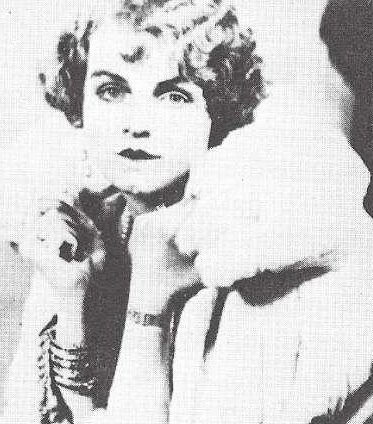
DOT KING
There was Texas Guinan (1884-1933) who, unlike Dot, actually had quite a successful stage career. Originally from Texas naturally enough, she started in the early 1900's in rodeo shows moving to the 1910's New York Vaudeville scene with a western act that included gun and rope tricks while telling bawdy jokes. Soon she would make her way to the legitimate musical and comedy stage where she would have several successful plays throughout the 1910's and even branching into films by 1917 with a series of westerns billed as the "Female William S Hart". By the 1920's she was in her forties, tastes were changing and her career was slowing down, but she spotted a new business opportunity. The first speakeasies were furtive and gloomy fly-by-night affairs, hardly a surprise as they were literally illegal, but after a night in which she impulsively appointed herself as hostess for a speakeasy, getting up on stage and singing bawdy songs, telling blue jokes and leading the crowd in singalongs, she was hired as hostess. Soon she would have a club of her own with the financial backing of New York mobster Larry Fay called Club El Fay which would become one of the wildest hotspots of a wild decade. Club El Fay was no dingy basement but operated quite openly and had a boisterous party atmosphere with a Jazz band, dancing girls and Texas herself taking to the stage to entertain and circulate through the crowd; back slapping, pounding shots and greeting guests with her loud trademark; "Hello Sucker!". Fay was able to get away with this open flouting of the law by using his underworld ties to pay off the cops with the local authorities reluctant to overly enthusiastically enforce the laws which were unpopular in New York anyway. Still the club would still get raided by the less easy-going federal authorities and would have to periodically change names and locations. Texas was flashy but she was not glamorous. She was usually described as brassy, she was loud, extroverted and bawdy, as if Mae West had been a cowgirl.
TEXAS GUINAN
For a more elegant, sedate experience there was singer Helen Morgan who became a friendly rival. Morgan (1900-1941) was another successful showgirl but of a completely different type. As a singer she was known for singing Torch Songs, slow mournful bluesy ballads of lost loves and being mistreated by no-good men with hits like "Love Me Or Leave Me" and "Can't Help Lovin' That Man Of Mine". Like Texas, Helen appeared in the Ziegfeld Follies and had even more stage success with major Broadway musicals "Showboat" and "Sweet Adeline" along with a few film appearances in the silent era. She would have her own speakeasy called Chez Morgan, French for "House Of Morgan" a play on the august banking firm owned by JP Morgan, the House Of Morgan. If Club El Fay was known for fun and games the House Of Morgan was the place you went to drown your tears. Wearing dignified black gowns Helen would perch atop a piano and regally serenade the respectful audience with torch songs. Texas was not glamorous but Helen was in her austere way, dressed in elegant gowns and tasteful jewels. Although attractive she was too remote and dignified to be sex symbol, but Dot King was. If Texas was about having an endless wild party and Helen appealed to the more intellectual and artistic drinker, Dot King sold sex appeal. Although she was actually six years older than Helen Morgan (her age being another one of her secrets) and secretly married, Dot was to all appearences a youthful flapper who could dance til dawn to the latest Charleston steps. Her club, which actually predated Texas and Helen's, was more jumping than Chez Morgan but more discreet than the rowdy Club El Fay with the prettiest girls and the prettiest hostess in Miss King who had acquired a new nickname "The Broadway Butterfly". Her backers were unknown but she was known to have mobsters among her clients including Arnold Rothstein who certainly had the deep pockets and Mob connections to do so.
HELEN MORGAN & RUDY VALEE
After society millionaire Kearsley Mitchell was cleared of Dot's unexplained murder more unsavory rumours and theories were bandied about by the police and a rabid media. Another one of her wealthy admirers was Draper Daugherty, who happened to be the wayward son of Harry Daughtery, the scandal prone (and soon to be indicted for corruption) Attorney General of the Warren Harding administration. Draper was a typical failson, a drunkard, gambler and womanizer who quickly checked himself into a sanitorium leading to obvious conspiracy theories that he or a hitman acting on his or his father's behalf had murdered Dot to cover up their affair, or that she had been silenced for knowing too much about his father's crooked deals. Then as if to further fuel suspicions Draper then escaped from the sanitorium and went on the run leading to more screaming headlines. There was no evidence that Draper was even in New York at the time of the murder however and the exasperated police dismissed him as a suspect as well once they finally caught up with him.
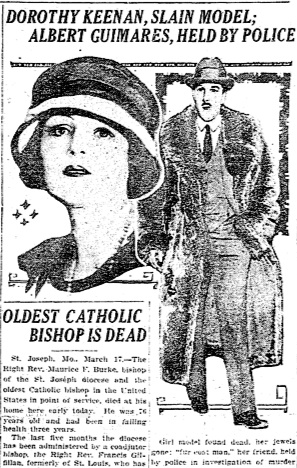
Dot had a complicated relationship with her mother Kate. She was a devout Catholic who strongly disapproved of Dot's wild and wayward ways and the two had frequent rows but they stayed in contact and she vouched for Mitchell as being a gentleman. Instead she had a very different opinion about another one of her lovers. Alberto Guimares was another 1920s stereotype, the Latin Lover. Guimares was a gigolo whose only visible means of support was the money and gifts he got from women, including Dot whose judgement about men was oddly lacking when it came to his dubious charms. According to her mother and friends Guimares was a cad who mooched off of her, cheated on her and smacked her around for good measure yet she was completely in thrall to his slick persona telling friends "one day I'll retire and take care of my Alberto". The Puerto Rican Guimares was also yet another typical Roaring Twenties figure; an inept conman. Originally a steel company executive who had looted his company's coffers to engage in a stock market grift, lost the money, got fired and fled to the mainland in search of another grift but ended up as a pathetic gigolo. Mrs Keenan was convinced of his guilt and urged the cops to drag him in which they duly did but the cocky Latin Lover produced an alibi in the form of Aurelia Dreyfus, billed by the press as a beautiful blonde socialite but actually a respectable upper middle-class girl he was having an affair with and who swore he had spent the night with her. The coroner later set the time of death in the early morning when Guimares was seen having breakfast which gave him a stronger alibi. For his part Guimares hated Mrs Keenan as much as she hated him and he told the police that she was also another "gouger" living off of Dot's generosity and who would be happy to make up stories to sell to the press and may have even killed Dot herself. Police thought this unlikely but in fact Dot had only recently made out a new will leaving her estate to Kate which was found on a nearby table. So lacking any real evidence the frustrated police released him. Guimares was such an obvious sleaze that additional theories were speculated about, including that they were running a blackmail scheme entrapping wealthy married men, one of whom killed her. Or that they were involved with a ring of jewel thieves one of whom killed her for her stash of missing jewels that were in fact missing. There was no evidence that there was a blackmail ring but the press enjoyed the scandalous speculation that implied, or that she had to force men to support her or that Guimares had to force her to support him. As for the jewel thief ring there in fact had been such a ring operating in the area but there's no evidence that Guimares, who was at most an inept embezzler, was actually a jewel thief and the missing jewels never turned up and putting a tail on Guimares turned up nothing either. As the trail petered out the press gave her a new nickname "The Broken Butterfly" and that would stick until the story jumped back into the headlines again the next year with yet another murder of a pretty actress/escort friend of Dot's.
LOUISE LAWSON & HILDA FERGUSON ~ THE TEXAS BUTTERFLY & THE SHIMMY GIRL;

LOUISE LAWSON
Louise Lawson was a friend and former roommate of Dot's with a similar life path. Lawson's showbiz career is slightly more clear than Dot's shadowy resume. Born in a small town Texas in 1898 where she sang and played piano apparently with some skill and like many outgoing, fairly attractive, moderately talented girls she dreamed of the bright lights of Broadway and Hollywood and soon made her way to both where she meant with a tiny slice of success. She got one screen credit as an extra in DW Griffith's "Way Down East" (1920) where she can be seen in a blink-and-you'll-miss-it bit part as a dancer. She was proud of this but she probably only made about $20. This did not lead to a contract with Griffith or United Artists and while she may have been an extra in other films there's no record of it and as the film industry moved from New York and New Jersey to Hollywood she stayed behind and tried the lights of Broadway where she turned up as a chorus girl in Ziegfeld's Follies 1921 Revue at a princely salary of $75 a week. New York is where she would also meet Dot and the two became fast friends. She also became a hostess at Dot's club and she perhaps inevitably also became a high priced courtesan with at least one client being Gerhardt Dahl, a married executive of the Brooklyn-Manhattan Transit Company. Lawson may not have been as beautiful or charismatic as Dot or had her ability to create a new persona for herself but she was tall, slim and fit and she obviously had her charms because like Dot she also soon earned a stache of around $15,000 worth of jewels and another $15,000 worth of stocks.
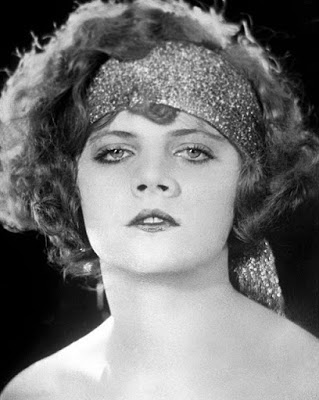
HILDA FERGUSON; THE SHIMMY GIRL
The girls were the hub of a circle of hard partying Ziegfeld girls that included genuine stars in singer Blossom Seeley and the beautiful dancer and model Hilda Ferguson, known as "Shimmy Girl" for her dancing, who had only recently shared the apartment with Dot moving out after having a dispute over the ammount of partying they were doing. Hilda later claimed Dot had too many late nights and she needed her beauty sleep but given Hilda's own behaviour the opposite seems more likely. Ferguson was also known as "The Body" and was widely admired as one of the most stunning of all Ziegfeld Girls as well as one of the wildest. Like Dot she had eloped at the ripe age of 15, had a child then swiftly dropped both husband and child for a successful run as a popular Ziegfeld Follies showgirl known for her dance known as the Shimmy. She was equally known for her stunning beauty and her endless drinking and partying, exsessive even for the Roaring Twenties. She also collected a stable of lovers that included the likes of Gerorge Raft and Arthur Gershwin and the less savory but more powerfull Mobsters Nucky Johnson and Arnold Rothstein. Neighbours often complained about loud parties into the night. On Feburary 8, just under a year after Dot's murder, two men described as "rough looking types" called at Lawton's luxury appartment with a delivery of bootleg booze. Or so they said. A neighbour later testified seeing them and hearing her state from behind the door that had not ordered any. She was found the next day tied and suffocated to death with her apartment ransacked and her money and jewels missing, she was 26. This time there was no need for wild speculation and conspiracy theories about millionaires or politicians being blackmailed and the motive was obvious. Clearly there was a ring of jewel thieves doing home invasions.

However this time the police had even fewer leads and this case would also go unsolved. Hilda Ferguson, who was herself questioned by the police for one insisted that Lawson was murdered for knowing too much about Dot and Alberto's illicit businesses then she made a hasty trip to Europe. But Guimares once again had an alibi and there was little to connect him with the crime other than his having been closely associated with both women. However upon looking into his various shady dealings the police were able to arrest him anyway and he would serve three years for fraud. His name would end up involved with another suspected murder when in 1929 Aurelia Dreyfus, his by then former lover who had provided him with his alibi, mysteriously fell, jumped or was pushed from an appartment balcony after a night of drinking at with a crony of Guimares. Among her possessions was an affidavit in which she renounced her previous alibi testimony as a lie. Guimares and crony were again grilled but again there was no proof. Other witnesses said Aurelia had been drunk and upset so she could have fallen or even jumped and her confession could have been a lie designed to take revenge on the caddish Alberto. It's also quite possible that she had indeed lied in providing him with an alibi that night in 1923 but since it later turned out that Dot was murdered in the morning when he had other alibi witnesses seeing him a breakfast it wasn't neccesary after all. Crime historians think that while Guimares was certainly a criminal and is an obvious suspect in three murders but concede the showgirls could have been the victims of home invasions as well, there is simply no way of knowing. Once again no arrests would be made but much ink would be spilled in the tabloids who would dub Lawson as another "Broken Butterfly" and add them to the list of showbiz scandals of the early twenties that included Fatty Arbuckle, William Desmond Taylor and Wallace Reid and would lead to the imposition of the dreaded Hays Code.
===========================================
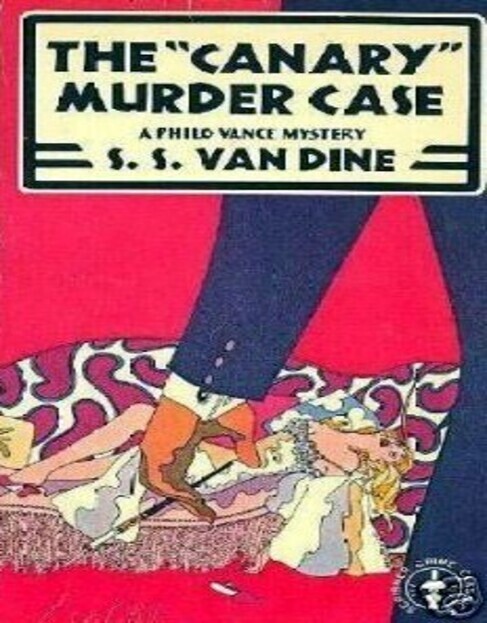
SS Van Dine had written the original novel in 1927 when Dot's murder was still in screaming headlines and was openly inspired by the case and by the time filming started another murder had happened (possibly three if you include Aurelia) and the cases were fresh in public's memories. The similarities are obvious; Both the Butterfly and the Canary were Broadway showgirls and high priced courtesans, both were billed as delicate winged creatures (the Butterfly and the Canary), both were strangled or suffocated in their apartments and while most crime historians dismiss the theory about Dot being a blackmailer as was the Canary, it was a theory widely speculated at by the press at the time. Like Dot the Canary has a freeloading and violent pimp and a no-good ex husband although in the Canary's case they are the same man. The characters of the father covering for his wayward son is probably inspired by Harry and Draper Daughertey. Although the Canary was given a different name, like Dot her real name, Margaret O'Dell, is as Irish as was Dot's real name Anna Keenan. Note the flashy opening scene with the Canary on her swing was probably inspired by another celebrity sex and murder mystery in the still notorious case of the 1912 New York murder of high society architect Stanford White by millionaire Henry K Thaw, violently jealous over a previous affair with his stunningly beautiful model and dancer wife Evelyn Nesbitt. One of the more titillating items of White's scandalous parties that the public obsessed over during the resulting press bonfire involved the delectable Evelyn on a high flying swing. This last hijinx earing her the nickname "The Girl On The Red Velvet Swing" and inspiring more than a few high flying burlesque stage acts. Nesbitt (1885-1967) would inevitably become a Zigegfeld Girl as well and later make her way into a brief silent film career.
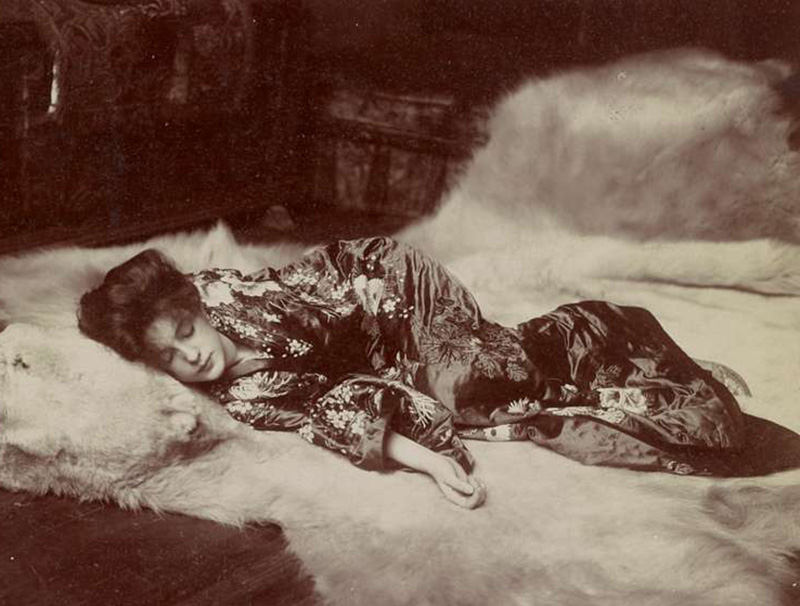
EVELYN NESBITT; THE GIRL ON THE RED VELVET SWING
As for "The Canary Murder Case", the film met mixed reviews hampered by sluggish pacing and awkward dubbing. For her part Louise, apparently forgetting that she was the one who walked away from the film (twice) had the nerve to be annoyed at the dubbing job, feeling Livingston's voice was too shrill and most critics at the time and since have agreed, although she did not blame Livingston who she allowed was "a lovely girl". The solution involving a gramophone is clever if impracticable. The film was successful enough to spinoff to more Philo Vance movies every year for the rest of the thirties, usually starring William Powell who would later go on to star in the even more popular "Thin Man" series of detective films which would include an Oscar nomination. Another Philo Vance movie would star a pre-Sherlock Holmes Basil Rathbone. Meanwhile the story of the Broken Butterfly was still fresh in the public's mind enough to inspire another film once the sound technology had improved somewhat.
===========================================
THE KING MURDER (1932);
Directed By Richard Thorpe
CAST;
CONWAY TEARLE ~ DETECTIVE HENRY BARTON
NATALIE MOORHEAD ~ ELIZABETH HAWTON
MARCELINE DAY ~ PEARL HOPE
DOROTHY REVIER ~ MIRIAM KING
ROBERT FRAZER ~ VAN KEMPTON
ROSE DIONNE ~ MISS DUVAL
==================================================
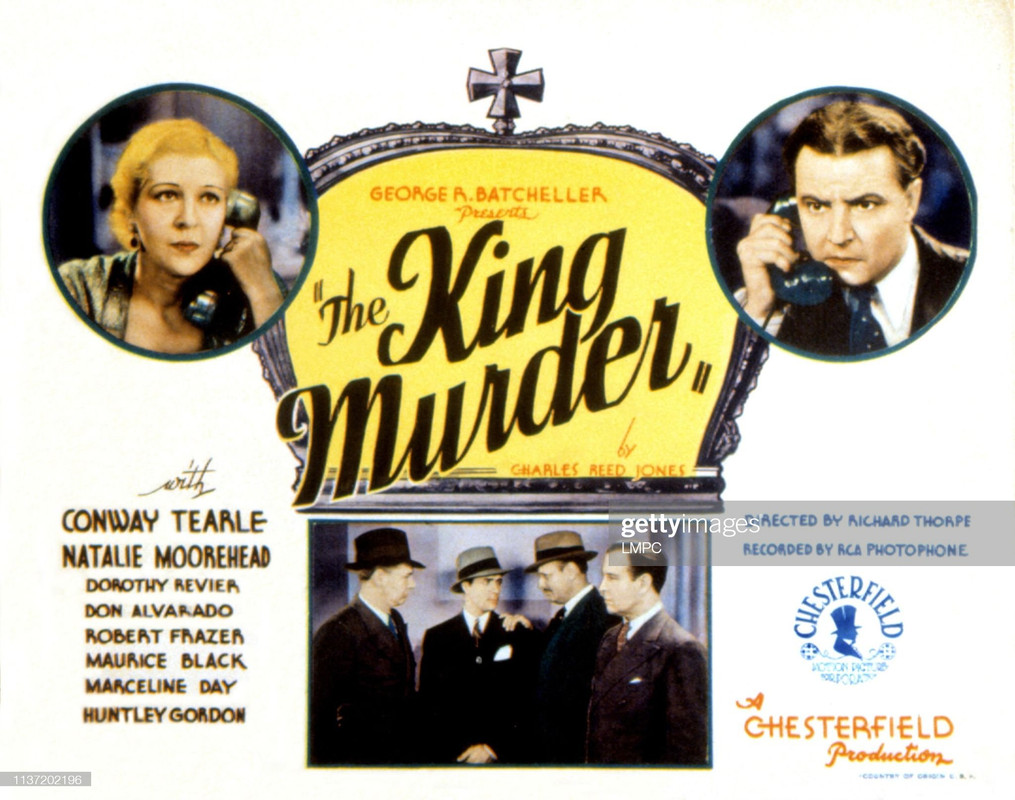
The plot this time is very similar to the previous film with a blackmailing courtesan shaking down various older wealthy clients and is murdered in her appartment in a similar fashion. This time the blackmailer is not a showgirl, indeed being a blackmailing call girl appears to be her only job, although she may a be a former one as her former pimp brags about bringing her into "the bright lights". Notably she is given the same surname (King) as the real Butterfly. Again there is a Guimares type character as a former pimp/partner in crime shaking her down although while he is not Latin there is another lover who is, however he is not a gangster. Like Dot she is found by her maid. Again to contrast with the scheming Miss King there are two loyal and faithful women who stand by their men even though one of them has actually been cheating on her with Miss King. One of the women is former apartment mate of Miss King's who had moved out citing too much drinking and partying as Hilda had with the real Dot (or so she said) but unlike Hilda while she is no showgirl either and appears to be a respectable classically trained pianist who has a grand piano in her apartment and she talks about moving to Europe to study. The detectives are regular police who conduct regular interviews without any of Philo's clever games. There are no flashy sets as with the Canary's swing but they are brighter and do look realistic enough (Odd trivia note; The photos on the Police Detective's office walls are of former Presidents Wilson and Taft rather than actual President Hoover, perhaps the set dresser was in a hurry). Both films feature a gramophone as part of the mystery albeit in different ways. The solution once again requires a piece of technology that seems rather impractical.
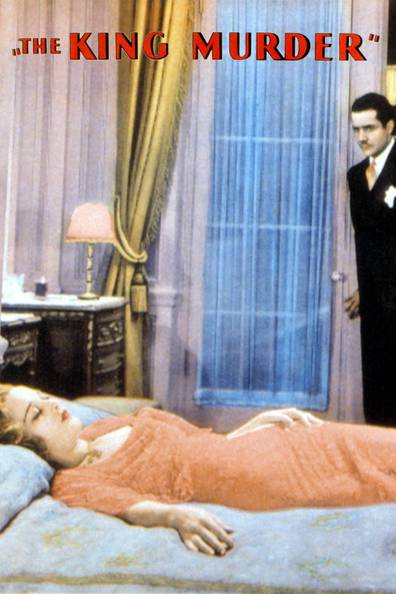
In some ways this is a better made film than "The Canary Murder Case". After a couple years filmmakers had a stronger grasp on how to make sound films and while this film is nothing special it is at least competent. The camerawork is better, there is more variety of shots, it's less stagy, there is no clumsy dubbing, the actors are less self conscious than some of those in the previous film and there is less stilted dialogue. On the other hand it does not have anyone as striking as Louise Brooks, or even as smooth and confident as William Powell for that matter. The detectives are faceless and lack Philo's cleverness, the crime is solved by accident and the ending is thus less satisfactory. None of the cast would make much of an impression, a problem that is accentuated by the fact that the three main women all basically look the same, for that matter so do the men although the head detective does bear a distracting resemblance to Edward R Murrow. This film doesn't have the clumsy comic relief characters of the 1929 film but that's not a loss a modern viewer will mind.
None of the cast are especially memorable. Dorothy Revier as the showgirl Miriam King, obviously doesn't have the charisma of Louise Brooks but that's not entirely her fault as she is only shown being a sneering shakedown scammer so we get no idea of why men might have fallen for her in the first place. Not that Brooks as the Canary was exactly likable either but she she did retain her natural charisma. Revier had a career starting in silent films but she spent her talkie career mostly in b-movies earning her the title the Queen Of Poverty Row. She slowed down after being injured in a serious car crash and she ended up an low budget Buck Jones westerns (as ironically would Louise Brooks as I wrote about here) in the 1930's before retiring from films to try her hand at painting. She died in 1993 aged 89.
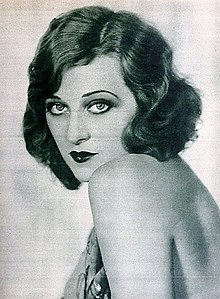
DOROTHY REVIER
Natalie Moorehead as one of the other women fares better, she has a certain elegance and a distinctive slick platinim blonde coif and frankly seems miscast as a loyal, long suffering financee. In a case of life somewhat immitating life once her career began to peter out at the end of the decade she married a much older millionaire tycoon and retired from film outliving him by forty years and dying in 1991 aged 89. Marceline Day as yet another Other Woman is more passive and bland but she was possibly also miscast as the slim and pretty Day was actually another former silent film actress with a list of credits that included playing a seductress in the legendary lost Lon Chaney film "London After Midnight" (1927), John Barrymore's "Beloved Rogue" (1927), Douglas Fairbanks "The Jazz Age" (1929) as well as Buster Keaton's "The Cameraman". However like a lot of silent film stars she seems to have had trouble making an impact in talkies and like Jean Arthur and Louise she ended up in popular but low budget westerns with the likes of Jack Hoxie, Hoot Gibson, Ken Maynard and John Wayne. She retired from films, married and walked away from Hollywood and refused all interview requests living quietly and dying in 2000 age 91. Robert Frazer, who plays the younger of Miss King's hapless lovers had also appeared in two classic early sound horror cult classics "White Zombie" (1932) and "The Vampire Bat (1933) dying of leukemia in 1944. Rose Dionne who plays Miss King's maid was a French actress with credits that included silent classics "The Four Horsemen Of The Appocalypse" (with Valentino), "Salome" (with Valentino and Alla Namizova), "Beloved Rogue (with Barrymore and Marceline Day) and "West Of Zanzibar" (with Lon Chaney) and the later cult classic "Freaks" which was her last role. She died in 1959.
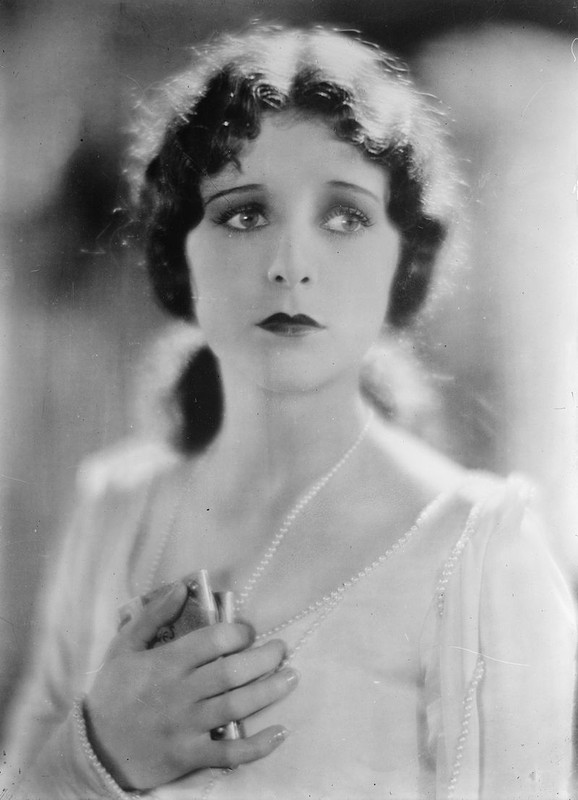
MARCELINE DAY
======================================
After two versions of the Butterfly's story, one a rushed patchwork job and the other a mediocre b-movie, Hollywood finally got around to making a feature film with a proper big name cast and a respectable writer in 1934.
"THE UPPERWORLD" CREDITS (1934);
This time the story has changed focus from the previous entries with the main character Alexander Stream being a wealthy bored executive (Warren William) who is cheating on his indifferent wife social climbing wife Hettie (Mary Astor) with a pretty showgirl Lilly Linda (Ginger Rogers). The Rogers character is quite different from the previous films as she is not a courtesan or a blackmailer but is instead wholesome and sincerely in love with Stream, although she does know he's married. There is a Guirmares type pimp character (J Carrol Naish) who is the actual blackmailer. This film is constantly pulling it's punches with it's characters. Stream cheats on his wife, takes petty revenge on a traffic cop by having him transfered and covers up for a murder but making him the main character (he's in virtually every scene) means he has to be likeable and is shown as a doting father and kindly boss whose wife neglects him. As his employees are loyal and fond of him along with Linda the viewer is expected to be as well as his wife who does the same. Mary Astor as the wife is a self centered social climber who pays little attention to her family, including snubbing her own anniversary dinner which seems rather unlikely. But then she is also shown in the end suddenly loyal, devoted and forgiving even after he cheated on her, covered up a murder and involved her in a high profile scandal which seems even less likely. Linda is also awfully understanding and undemanding of her position in their relationship. By contrast the cop (Sidney Toller) who is convinced of Stream's guilt is shown as completely unreasonable even though given the information he has he is not totally wrong and the other cops who cover for Stream are actually corrupt. Everything is designed to make Stream the sympathetic character even if it requires virtually every other character act in ways that make little sense. Aside from it's setting and some of it's characters this story has little to do with the original Dot King case or the theories around her and her murder and is more about the Warren William character. The film's title seems to imply this in contrasting the respectable upper class world of William, Mary Astor and their staff with the seedy underworld world Lilly Linda lives in even if she does not really seem to be a part of it.
GINGER ROGERS ~ "SHAKE YOUR POWDER PUFF"
The cast has some big names with Mary Astor (who ironically had played opposite William Powell in the 1933 Philo Vance movie "The Kennel Murder Case") as the wife and Ginger Rogers as the showgirl and both are naturally likable, however wholesome, perky Ginger Rogers lacks the natural charisma of Louise Brooks as the Other Woman, even if "The Canary Murder Case" had made little use of Louise. The supporting players includes recognizable names in perpetual comic relief sidekick Andy Devine, J Carol Naish, and Sidney Toller along with child actor Dickie Moore. Naish would go on to a long career as a heavy on both film and TV while Toller would become the lead in the iconic Charlie Chan series. Moore had previously been one of the Little Rascals and would continue into the TV era. Dapper Warren William as the lead is less well remembered but resembles a combination of William Powell and Adolphe Monjou. He would go on to play film detectives Philo Vance (after William Powell) and Perry Mason but would die in 1948 before the TV age. The film also had a big name writer in Ben Hecht who delivers a script that is has some of the elements of a screwball comedy.
The film has some fine upscale sets and costumes in Stream's house and this time the stage show actually shows Ginger Rogers performing. Her show only has her singing one song with a chorus girl backup although she doesn't actually dance which is odd given that she is Ginger Rogers after all. This seems like a waste of a perfectly good Ginger Rogers and perhaps they decided to keep a short shooting schedule in a rush to wrap up before the Production Code came into effect. This film is well shot, briskly paced and has a good cast but while released mere months before the Production Code came into full effect it's rather chaste given it's inspiration and even more shallow than the previous films in it's desire to have a happily-ever-after ending.
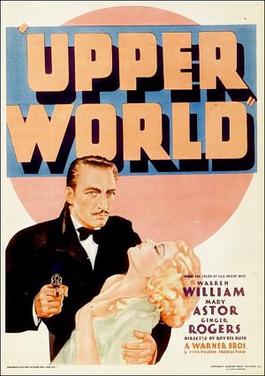
=======================================
"THE NAKED CITY" (1948);
DIRECTED BY JULES DASSIN
CAST:
BARRY FITZGERALD - LT DAN MULDOON
HOWARD DUFF - FRANK NILES
DOROTHY HART - RUTH MORRISON
DON TAYLOR - DETECTIVE JIMMY HALLORAN
TED DE CORSICA - WILLIE GARZAH
HOUSE JAMESON - Dr STONEMAN
ANNE SERGENT - MRS HALLORAN
JAMES GREGORY - POLICE PATROLMAN
==================================================
The last of the films inspired by the Butterfly murder actually has very little of the murder victim in it. There are similarities with Dot King with the woman named Jean Dexter being a model rather than a showgirl and choroform being involved in her murder. Like Dot King and Louise Lawson Dexter has her jewels stolen. Both Dot and Jean are murdered in their appartments at night and are found the next morning by their cleaning women. Unlike the first two films where the Canary and Miriam King were blackmailers, this film instead focuses on another theory about the real Dot King and Louise Lawson; that they were part of a jewel thief ring. This theory has been largely dismissed by modern crime historians but was considered possible at the time. This time the girl is killed off in the first scenes and not only does she get no lines we don't even see her face aside from a later newspaper photo. The main characters here are the police trying to solve the case and various suspects and all we know about the victim is through exposition. We learn she is estranged from her traditional small town parents and moved to New York City to pursue a career in showbiz and became a model. She has been carrying on affairs with at least two wealthy older men (played by Howard Duff and House Jameson) who have also been used as unwilling sources for information on potential jewel heists. There are none of the gimmicky solutions used in the first two films.
"Upperworld" was an awkward marriage of thirties gangster and screwball comedies which is not entirely successful but by the forties there were newer genres that were more suitable for the story of the Canary in Film Noir and while "The Naked City" is often considered a Noir it is actually a fine example of another relatively new genre as a Police Procedural. We get a methodical portrayal of the police working the case through tedious legwork, checking through records and questioning witnesses. "The Naked City" is today included as a Noir due largely due to its urban crime subject and black and white filming. However aside from being about crime there are none of the Noir themes. Unlike Noir crime films the hero here is not a cynical, hard-bitten private eye like Sam Spade or even an urbane, dapper, detached private eye like Philo Vance, the hero here is a rumpled, older detective played by Barry Fitzgerald as a wise and sympathetic if slightly sardonic Irish character. None of the police here are either corrupt or jaded but are instead honest, hard working professionals with conventional middle-class home lives.
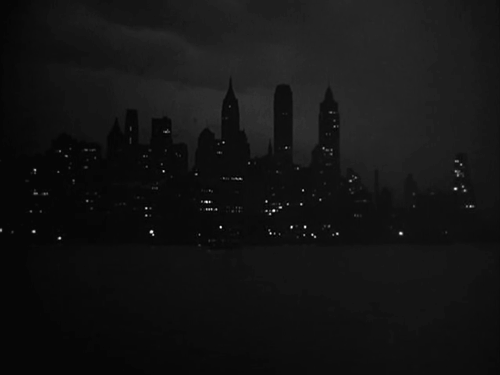
Because we never actually meet Miss Dexter and this time the film isn't about her anyway all we know about her is that she was an adultress involved with criminal activities the viewer is thus never asked to sympathize or identify with her. Introducing her parents doesn't really help as they are harsh and judgemental Christians while her other relationships were purely transactional. We get no idea about how Dexter fell in with a jewel thief ring. Was she a willing partner who was turned on or was she forced into it? Knowing that would make a difference in how we view her fate but nobody cares enough to ask. Even though she is the victim of a violent murder we are expected to instead at least somewhat sympathize with the two wealthy men she has been having afairs with and taking advantage of and who show remorse (although not with her thugish killer who does not) along with the loyal jilted fiancee.
Instead we identify with the police who are humble, respectable public servants doing an important job and none of whom are corrupt, cynical, careless or abusive. This is not a Noir theme but it is a common theme of police Procedurals. The police solve the case through hard work and some inspiration and luck unlike in the Canary case where they need the P.I. Philo Vance to solve it or in the King Murder where the case is solved basically by accident. Meanwhile in "Upperworld" some of the police actively try to cover up the murder to protect a wealthy suspect which none of the honest police here would ever consider doing. Let alone the bumbling, ineffectual performance of the real police in the real Dot King and Louise Lawson cases. Here as in most Procedurals the viewer can rest assured as the police solve the crime and justice is served. The criminals are an unimpressive lot. None are clever, witty or brave anti-heros but either weak saps or brutal thugs the audience will not find attractive. As in some Noirs there is an off-screen narrator but while in Noirs such a narrator would likely be the world weary detective here it is an anonymous slightly mocking voice who clearly knows more than the characters or the viewer and acts more as a reporter.
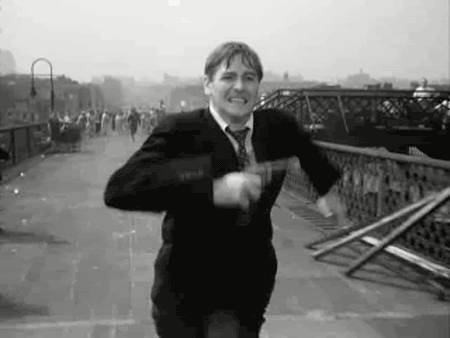
If the faceless and dead Dexter is impossible to identify with we have the elegant Dorothy Hart who plays the role of Duff's devoted fiance who as in the previous films seems too blindly loyal to her clearly unworthy fiance for a woman who is this beautiful, bright and worldly. One of the detectives has a pretty and loving housewife, Miss Dexter has a loyal housekeeper and even the doctor who is part of the jewel ring also has a nurse who is more devoted than a mere employee. The character of the puritanical mother is more complicated as she is judgemental and bitter (saying of her daughter "I hate her") but upon seeing her body at the morgue she breaks down and shows that she did indeed love her in her own way. As for the dead woman she is played, if that is the right word for a character we barely see, by an unknown actress or model.
Stylistically there are few Noir tropes aside from the opening shots of the murder which is done in shadow and through draped windows. Instead the bulk of the film is shot during the day and done in an almost cinema verite style (inspired by New York urban photograper Weegee who was on set) on what are obviously real busy city streets which are bustling with people, and lived-in neighbourhoods with mom & pop stores and cafes. All the sets are full of little details to add authenticity. There are some gorgeous panorama shots of the city skyscape showing its teeming skyscrapers and the Brooklyn Bridge. This provides an excellent and at times lively snapshot of mid-century New York City that would be the inspiration for a TV series of the same name a decade later with the same name but a completely diferent cast. The film also has a lush soundtrack from Nelson Riddle. Irish actor Barry Fitzgerald had a long and respected career begining on stage and startng in films with an early Hitchcock film "Juno & The Paycock" (1930) and included several John Ford movies and an Oscar for "Going My Way" (for which he was actually nominated for both Best Actor and best Supporting Actor, the rules being rather more vague at the time) and two stars on the Hollywood Walk Of Fame, dying in 1961. Howard Duff had already played Sam Spade on radio and would go on to a long career in film and TV up to his death in 1990. Glamorous Dorothy Hart got a lot of publicity as a potential star but would have a short film career mostly in low budget westerns and Tarzan films before retiring from film in 1952 to take a job working at the United Nations, dying in 2004. Sharp eyed viewers will note film debuts of James Gregory (later known for "The Manchurian Candidate" and "Barney Miller") as a police patrolman and Kathleen Freeman (Mother Superior in "The Blues Brothers") as a nosey woman on the subway. Nelson Riddle would have an extensive discography as a producer and arranger of a string of lush pop ballad hits in the 1950's with the likes of Nat King Cole, Frank Sinatra, Bing Crosby, Rosemary Clooney, Shirley Bassey, Judy Garland, Peggy Lee, Keely Smith, Slim Whitman, Ella Fitzgerald and others with a surprising early 80's revival in three hit albums with Linda Rondstat. Although he was by then associated with a long past pre rock & roll era he was actually only a comparatively young 64 when he died in 1985.

DOROTHY HART
======================================
As might be expected Hollywood had used the story of the Broadway Butterflies to tell a moral story, but as also might be expected it was the wrong moral. There was indeed a lesson to be had here; Both Dot King and Louise Lawson were pretty, moderately talented, bored, ambitious, young women from poor to humble backgrounds who dreamed of showbiz careers who instead were lured into prostituion (albeit unlike in many other cases theirs were lucrative) and eventually violent death at the hands of men. The same was essentially true of the more talented Hilda Fergusson and it was a fate that Louise Brooks would eventually fear awaited her, and to a certain extent it did. This was not however the moral Hollywood or indeed Broadway wanted to tell as it would have implicated the men who ran both worlds which were already notorious for their casting couches and for using up and discarding young girls with nary a backwards glance. Instead in these films the characters of the Canary and Miriam King were portrayed as Bad Girls, wanton vixens who tempted men who were helpless victims of their Siren call. The women may have been victims of murder but it was understood that they to some degree deserved it. In both cases their murderers were shown as being driven to it as a last resort, provoked by the greedy women who threatened their reputation and goals to settle down to respectable family life with a nice respectable woman. This still esentially true of the wealthy men in "The Naked City" although not the thuggish actual killer. "Upperworld" is a bit differet as Ginger Rogers' showgirl is pretty blameless aside from having an affair with a married man.
In the case of the real Dot King and Louise Lawson there is no evidence they were involved in blackmail or theft. They were unquestionably the victims of crime rather than the perpetrators of it. Yes they obviously broke prohibition laws but so did plenty of other respectable folk. They were also possibly breaking prostitution laws although their status was a little unclear as they were more like mistresses who accepted gifts and money which is not exactly illegal and not likely to be prosecuted. Certainly none of their various male clients ever were. There is no hint that any of the clearly wealthy (and in some cases much older) men in these films are taking advantage of younger, beautiful girls. They are all shown as smitten puppets at the beck and call of cynical vixens. This is frankly unfair to Dot King and Louise Lawson who may have been reckless and foolish but seem to have been genuinely fond of the men in their lives and in the case of Dot fatally attracted to the unworthy Alberto. All four films do have similar Alberto type characters lurking around but here they are seen as more-or-less equals as ongoing or former partners in crime. They are not abusive cads like the real Alberto who sponged off and beat the real Butterfly. Notably in the films the dead women are without friends or family (unlike the real Dot King) and nobody misses them or cares about them at all so there's no reason the audience should either. The victim in "The Naked City" does have a family but they are estranged and a have a relationship that could generously be described as tense.
Conversely both male killers in the first two films are sympathetic and die taking responsibility allowing at least some partial redemption. The audience is expected to at least partially identify with them but not with the wanton women, and lest some women in the audience are tempted to do so we are provided with other faithful women who are also victims of the callous greed of Miriam King, Jean Dexter and the Canary and who stand by their men who they will then marry and live happily ever after with. "Upperworld" is different in that the thugish killer is himself quickly killed off and the philandering husband is blameless of the murder at least as is Ginger's wholesome showgirl. "The Naked City" has elemants of both as the killer is an unlikable thug but the dead woman is another scheming temptress and the men who have been buying her favours are seen as being somewhat sympathetic and show remorse. The audience can rest easy as all's well that ends well here; the bad women are removed from the scene, the crimes are solved, the killers fall on their swords, the innocent are set free, the adulterous men return to their families and everything returns to normal with no hint that there might in fact be rot and corruption in the showbiz dream factory. One wonders what GW Pabst, who directed more thoughtful and sympathetic films about beautiful fallen women at the mercy of wealthy men in the coldhearted city in the films "Diary Of A Lost Girl" and "Pandors's Box" (with Louise Brooks), "The Joyless Street" (with Greta Garbo, Asta Neilsen and Hertha Von Walther ) and "The Love Of Jeanne Ney" (with Brigette Helm and Edith Jehanne) would have made of this story. With or without Brooks he would undoubtably have made the Butterfly the centre of the film and not the various men and certainly not the cops.
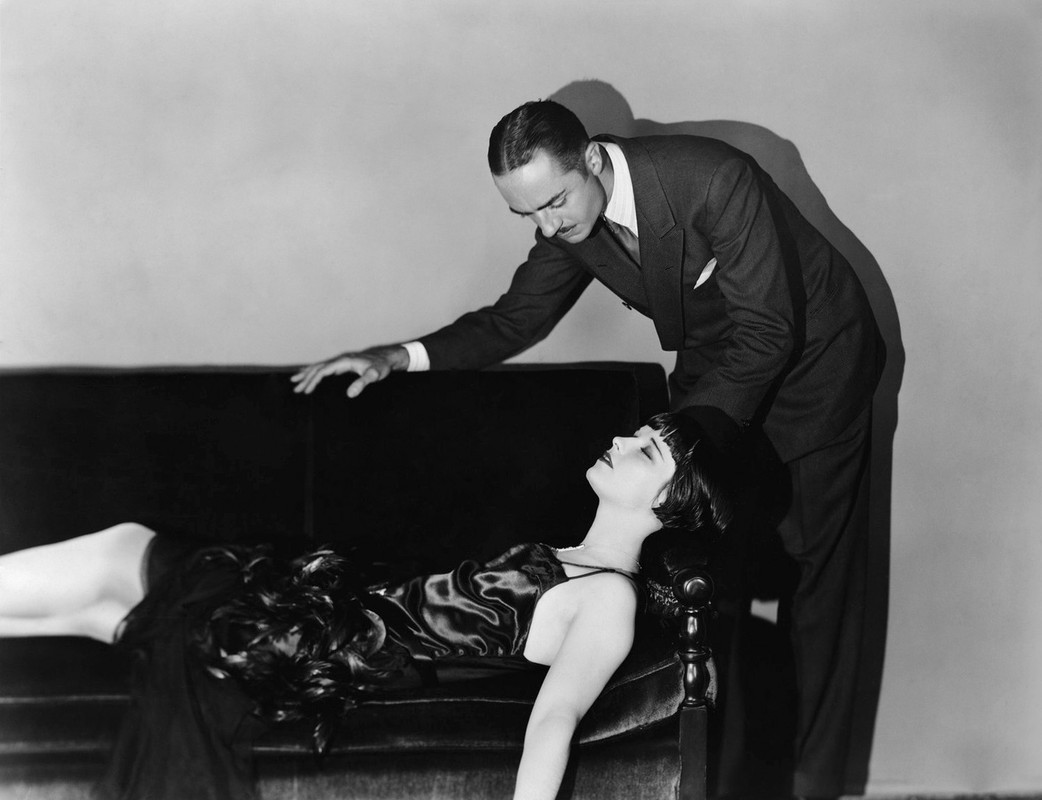
LOUISE & WILLIAM POWELL
===========================================================
AFTERMATH;
It would be gratifying to report that Alberto Guimares would meet some sort of appropriate fate but instead he would parlay his oily charms to marry another wealthy woman, move to Miami and managed to stay out of trouble or at least out of jail and out of the headlines until he died in 1953 aged 63 taking whatever secrets he had to the grave. Infamous speakeasy hosts Texas Guinan and Helen Morgan did not survive the end of Prohibition very long. Guinan in fact died in November 1933 one month before the 18th Ammenendment was repealed, aged 49 of dysentary which she caught while on tour in Vancouver. Her gangster backer Larry Fay didn't even make it that far being gunned down on New Years Eve 1932 and dying the next day. Somewhat embarrassingly he was not rubbed out by a rival gangster but by his own doorman after Fay cut his pay. Helen Morgan resumed her music and film career but her heavy drinking caught up with her and she died of cirrhosis of the liver in 1941 aged 41.
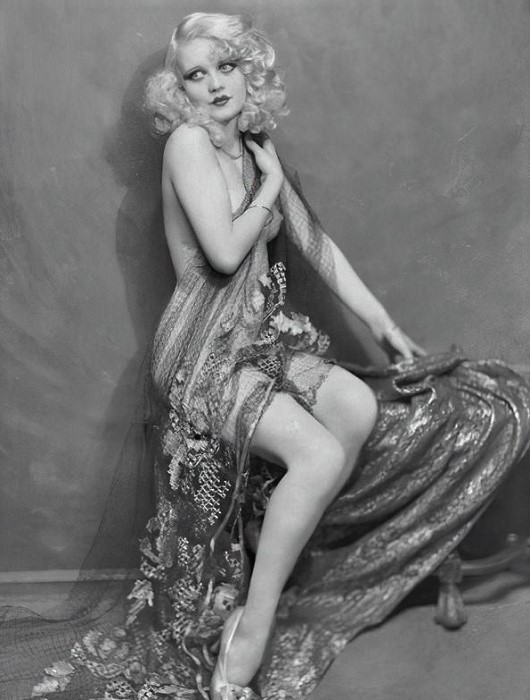
HILDA FERGUSON; AKA THE BODY
Although Hilda Freguson had said she moved out of Dot's apartment because there was too much partying, she would continue to live fast and die young. In 1927 she left Ziegfeld Follies and appeared in a new stage production of a gangster musical called "Yours Truly" in which she had a solo dance number and while her part was dropped for the touring show she was successful enough to net her a three picture deal with Tiffany Studios. Unfortunately for her and for those who would like to see the Shimmy Girl in action no films would ever be made and the suspicion was that her advance was a way of paying her off. Like Dot she would continue to be associated with mobster Arnold Rothstein and was even present in 1928 at a legendary all night poker game in which he lost over half a million dollars which he refused to pay and was then gunned down the next day. She quickly announced her retirement and engagement to a sixty year old billionaire but that wedding also never took place. In 1931 she was present when her latest mobster lover, Willie "Tough Guy" McCabe got himself stabbed and her reluctance to testify got her held for a time as a material witness. All the while her drink intake increased. In 1931 she was offered an eye popping $10,000 dollars for her memoirs which she said would be scandalous as well as having secrets about the murders of Dot and Lawson however she ultimately turned it down telling friends "I can get twice as much from various men to not write it". If so she evidently did not or she was holding out for a bigger deal or perhaps she managed to blow through the cash as by 1932 the former toast of Broadway was bankrupt and working as a sales girl in a hat shop. In 1933 her drinking of rotgut gin caught up to her and she was rushed to the hospital where she died of peritonitis aged only 30. None of her former lovers or Broadway friends showed up for her funeral.
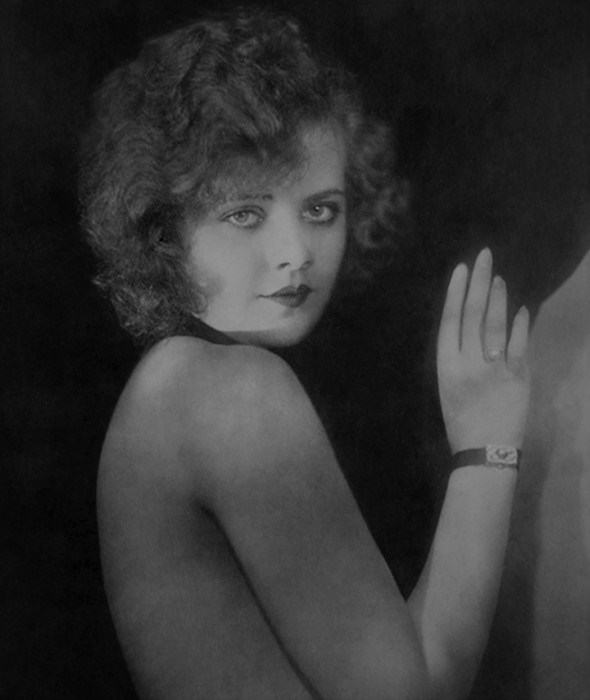
HILDA FERGUSON
It's unknown if Louise Brooks knew either of the Butterflies as while she had also been a Ziegfeld Girl in 1925, both Dot and Lawson were dead by that time. Hilda Ferguson was however also in the Follies from 1923 to 1925 at the same time Louise was. Also in 1927 Hilda had left the Follies to appear in another show "Yours Truly" (described as a "gangster musical") and in going over showbills I discovered that one of the other girls in that show was actress Anastasia Reilly who was a good friend of Louise's so it's entirely possible Louise and the Shimmy Girl did meet. But even if they did not Louise undoubtably understood them and their fates as it was a fate she had begun to worry awaited her by the end of the thirties. After refusing to do the voiceovers or reshoots for "The Canary Murder Case" Louise broke up with her latest lover and returned to Hollywood where she was given a few supporting roles in lightweight comedies which she handled with her usual effortless charm. However after spending some time in her studio penalty box in 1931 director William Wellman (who had directed her in "Beggars Of Life") offered her a lead role in "Public Enemy", the classic gangster movie starring Jimmy Cagney which would make Jean Harlow a star but which the ever unpredictable Louise turned down. She had also turned down a role in a non descript Buck Jones western as beneath her. Turning down Wellman was the last straw for the studio, fed up with her attitude, and she would never be offered a lead role again in a major studio production. Soon she was reduced to minor roles in a comedy short directed by Fatty Arbuckle in one of his last films, a chorus girl role in a musical and another minor role in a gangster film made by a producer known for his casting couch which ended up on the cutting room floor. Like Jean Arthur and Marceline Day her last two films were mediocre low budget westerns including "Empty Saddles" with Buck Jones and "Overland Stage Raiders" (1938) with John Wayne. She was warned by friends that she would never be given any better roles and she was in danger of being seen as another desperate potential call-girl so she gave in and left Hollywood for good in 1940. In some panic she married a dancer with whom she started a dance studio but Louise was simply not temperamentally suited to marriage or running a business and by the mid forties she was single, unemployed and back in New York. She didn't find any stage work but ironically the actress who twice refused a voice audition found some work in radio, but it didn't last and like Hilda Ferguson she ended up working as a store clerk. Inevitably her desperation and heavy drinking led her to some time as an escort until one of her ex lovers, CBS Chairmen William Paley, gave her a lifetime stipend that enabled her to pay her rent and engage in her main occupation by that point; drinking herself into a stupor and feeling sorry for herself. Eventually in the 1950's she would be rediscovered living quietly in Rochester, New York and create a new sunset career as a perceptive writer on silent films. In the end the Canary may have returned to her cage but unlike the Butterflies she was finally able to sing.
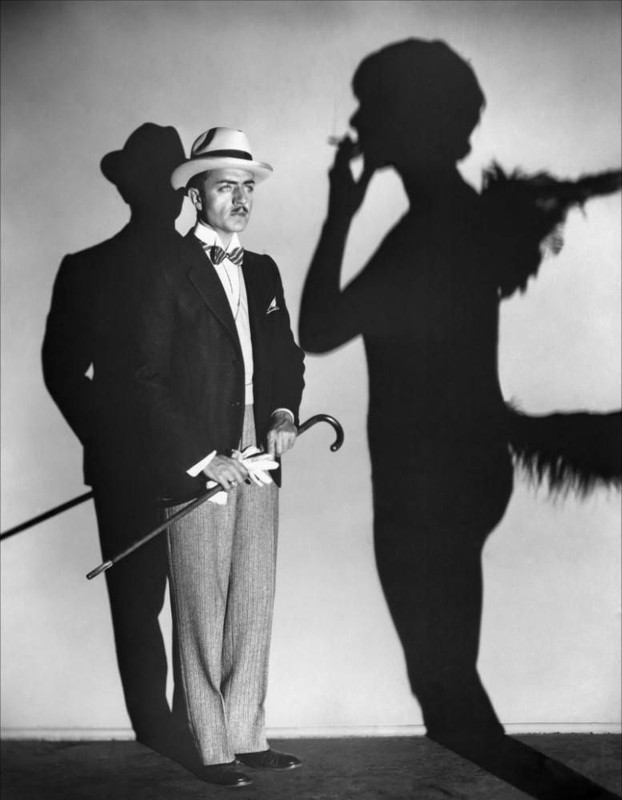
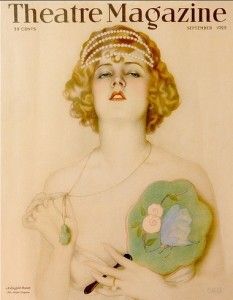
HILDA
LINDA RONSTADT & THE NELSON RIDDLE ORCH ~ "WHAT'S NEW";
